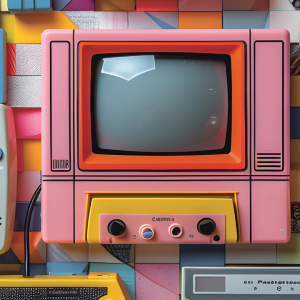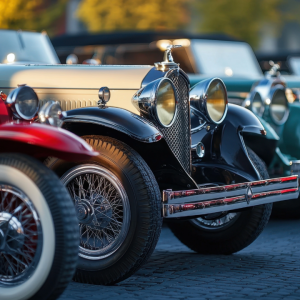Collectibles are more than just objects—they are the physical remnants of history, culture, and society. Whether it's a vintage toy from the 80s, a rare comic book, or a propaganda poster from a pivotal political movement, collectibles have an extraordinary ability to preserve and tell stories that span generations. They give us a window into the lives of people from different eras, providing a tangible connection to the past while also reflecting the cultural, social, and political landscapes of the time.
In this article, we explore how collectibles serve as cultural snapshots, capturing the essence of various periods and telling the stories of the societies that produced them. From pop culture to political movements, collectibles are not only valuable artifacts but also rich sources of historical education and emotional connection.
1. The Power of Pop Culture Collectibles
Pop culture collectibles, from action figures to posters, have always had a special place in our hearts. These items don’t just reflect the entertainment of the time—they represent shared experiences and collective memories. Think about the iconic Star Wars action figures from the 1970s or the famous Barbie dolls that have been a staple of childhood for decades. These items are more than toys—they are emblems of the eras in which they were created.
Pop culture collectibles can tell us a lot about the social values, trends, and innovations of their respective periods. For example, Star Wars action figures are more than just merchandise; they represent the massive cultural shift brought on by the groundbreaking cinematic technology of the 1970s. They also showcase the rise of science fiction as a dominant genre in mainstream media.
Pop culture not only defines how we remember a period but also shapes the future of collectibles. History.com provides great insights into how pop culture influences the collectibles market. Read more about pop culture and collectibles here.
2. Collectibles as Political Propaganda
While pop culture collectibles reflect entertainment and leisure, other types of collectibles—particularly those tied to political movements—offer a deeper and sometimes more somber reflection of the times. Political propaganda posters, buttons, and other memorabilia are powerful symbols of the ideologies and movements that have shaped the course of history.
One of the most famous examples of this is World War II propaganda posters, which were designed to rally support for the war effort. These posters often featured bold, emotional imagery aimed at evoking patriotism, fear, or anger. For instance, the iconic "We Can Do It!" poster featuring Rosie the Riveter became an enduring symbol of female empowerment and the significant role women played in the workforce during the war.
Similarly, political campaign buttons, such as those from past U.S. presidential elections, offer insight into the shifting values of American society and the ever-changing political landscape. These collectibles help us understand the hopes, fears, and desires of voters at the time, making them powerful cultural artifacts that provide a snapshot of a nation’s political history.
The Smithsonian has explored what collectibles can say about society and their role in documenting history. Check out their article on what collectibles reveal about us here.
3. The Intersection of Art, History, and Culture
Some collectibles straddle the line between art and history, serving as both aesthetic expressions and cultural markers. These items, such as art deco pieces, vintage jewelry, and antique furniture, tell stories about changing tastes, artistic movements, and historical periods.
For example, the art deco movement of the early 20th century, known for its sleek, geometric designs and luxurious materials, captured the optimism and technological progress of the time. Collectors today cherish art deco furniture and decorative items not just for their beauty but for what they represent—a period of societal change and creative innovation.
Likewise, vintage advertisements have become a sought-after collectible in recent years. These posters and prints are not only visually striking but are a testament to the evolution of marketing, consumerism, and societal trends. From the 1920s flapper ads to the bold, colorful Coca-Cola posters, these collectibles are a window into the shifting landscape of commerce and society.
4. Modern Collectibles and Their Future Impact
As we continue into the 21st century, the collectibles of today will undoubtedly become tomorrow’s historical artifacts. Current items like memes, digital art, and NFTs (non-fungible tokens) are changing the landscape of collecting. These items, while innovative and futuristic, are likely to be seen as cultural markers of the digital age, reflecting the growing influence of technology and social media on our everyday lives.
The cultural significance of modern collectibles may not yet be fully understood, but they represent the way we connect and communicate in today's world. The rise of social media icons, internet celebrities, and digital goods may become an entirely new category of collectibles that future generations will look back on as reflections of our digital culture.
5. The Emotional Connection to Collectibles
What makes collectibles so powerful is their ability to forge an emotional connection. Whether it's a sports jersey worn by a favorite player or a comic book that reminds us of our childhood, collectibles often represent more than just their physical form. They are tied to personal memories, milestones, and experiences that we hold dear. For many, owning a collectible is a way to preserve a piece of history or a fragment of their own story.
This emotional bond is why collecting can be so deeply personal. For some, it's a way to honor their favorite sports teams, historical events, or childhood heroes. For others, it's about preserving the beauty or craftsmanship of an era. These items not only hold value but carry the stories, emotions, and experiences of those who owned them.
Collectiblepedia: A Time Capsule of Culture, History, and Humanity
At Collectiblepedia, we believe that collectibles are more than just objects—they are the threads that weave together the story of humanity. Our platform serves as a guide to understanding and appreciating the rich history behind the items we collect. It’s not just a catalog—it’s a time capsule of culture, history, and the diverse experiences that have shaped our world.
Whether you're an avid collector or a casual enthusiast, Collectiblepedia is here to help you discover the deeper meanings behind your collection, connect with other collectors, and appreciate the stories that each item tells.







